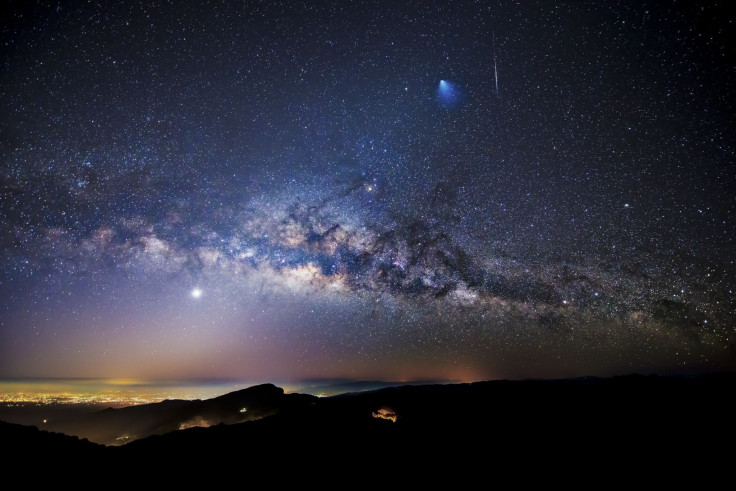Sky Watching: Don't Miss The Lyrid Meteor Shower's Peak
KEY POINTS
- The Lyrids are set to peak on the evening of April 22 to 23
- It is considered one of the oldest meteor showers
- Observe the Lyrids at every opportunity just in case something unusual occurs: American Meteor Society
The Lyrid meteor shower is now active, ending the year's meteor shower drought. Get ready because it's set to peak in the coming days.
The Lyrid meteor shower occurs when the Earth passes the dusty trails of comet Thatcher. Each year, the arrival of the Lyrids marks the end of the annual meteor shower drought that runs from January to mid-April.
Lyrid's activity began on April 15 and is expected to remain active until the tail-end of the month, according to the American Meteor Society (AMS). It's set to peak on the evening of April 22 to 23, with the peak time predicted to be near 1:00 a.m. UT on April 23 (9:00 p.m. EDT on April 22).
The Lyrids will start being visible around 10:30 p.m. local time, NASA's Bill Cooke told Space.com.
With the peak expected to last for only a few hours, skywatchers will have to time their viewing so they won't miss the celestial show. Good shower rates are expected "for three nights centered on the maximum."
It is considered to be a "medium strength" shower. Under normal circumstances, skywatchers could expect a meteor rate of about 10 per hour. The good news is that the Moon will only be 9% full on the evening of the peak, so its light won't hinder viewing.
"The best strategy to see these meteors is to view from the darkest site possible," noted the AMS. "The more stars you see, the more meteors will be visible."
The Lyrids are said to be best seen from the Northern Hemisphere, though they're also visible from the Southern Hemisphere, albeit at lower rates.
Even though the Lyrids may not be as strong or reliable as other popular meteor showers like the Perseids and the Geminids, they are known to produce bright meteors and sometimes even fireballs. It could be something that skywatchers can look forward to.
Lyrids as considered to be among the oldest meteor showers. Records of it date back over 2,500 years. Furthermore, the Lyrids also tend to surprise viewers with impressive displays every now and then, just like what happened in 1922, 1966 and 1982. These outbursts appear to happen every 60 years, noted EarthSky. So, the next could be in 2042.
"There have been unverified reports of lesser outbursts which have led us to think that there may be debris from this comet trapped in shorter orbits with a 12- or 20-year return period," noted the AMS. "Therefore, we suggest that potential observers observe the Lyrids at every opportunity just in case something unusual occurs."
Whether an outburst occurs or not, this could mark a great beginning of this year's meteor shower-watching activities. So far, the eta Aquariids are already active, and will reach its maximum activity just weeks later on the evening of May 5 to 6.

© Copyright IBTimes 2025. All rights reserved.






















